The bombing of the Alfred P. Murrah Federal Building by Timothy McVeigh occurred on April 19, 1995, at 9:02 am, changing America forever. The mayor of Oklahoma City, Ron Norick, appointed a 350-member task force to develop a memorial to honor all of those affected by the event. Today, we visited the memorial and museum that was envisioned by the group after extensive interaction with many individuals directly and indirectly involved in the event that day and the ones that followed.
The Mission Statement created by the task force reflects the values and expectations of the resulting memorial:
“We come here to remember those who were killed, those who survive and those changed forever. May all who leave here know the impact of violence. May this memorial offer comfort, strength, peace, hope and serenity.”
We began our visit at the Museum. The outpouring of support worldwide including that of children is reflected in the tiles on display that were sent to OK City following the bombing.
A video narrated by native Oklahoman, Kristin Chenoweth (famed singer/actress) sets the stage for what can be seen in the museum. It tells the story of what happened that clear, cool morning.
The America’s Kids day care center in the building opened at 7 am each morning, and most kids (21) were there when the bomb was detonated. The YMCA day center had 53 kids checked in. Various training programs were underway (one for paramedics and another for police officers).
Some of the remains of the bombed building are on display in the museum.
The blast damaged 324 other buildings in a 16-block radius to the federal building.
This diagram illustrates the area that was damaged by the explosives in a Ryder Rental truck parked in front. The Alfred P. Murrah building, built in 1977, was 9 stories and housed 14 federal agencies.
This is an actual photo of the building following the implosion.
The US seal was salvaged from the building and various exhibits show the destruction of the interior.
There were 650 people injured and 168 died in the deadliest attack in the US (until 9/11). Most were due to the collapse of the building (3 deaths occurred outside the building).
Fire Station 1 is only 5 blocks from the bomb site and were on the scene in minutes. Other first responders quickly joined in the rescue efforts. The image of a firefighter (Chris Fields) cradling a one-year-old girl (Baylee Almon) became a symbol of the tragedy in Oklahoma City. The photo won a Pulitzer Prize, but, sadly, the baby was pronounced dead at the hospital.
Rescue canine teams from around the country aided with the search and rescue efforts as many people were trapped in the debris of the building.
The Gallery of Honor has the name and a photo of each victim of the bombing. If you haven’t cried yet in this museum, this exhibit is heart wrenching. The ages of the victims were 3 months to 73 years old. Three were pregnant. Of the 19 children that perished, 15 of them were in America’s Kids Day Care.
Timothy McVeigh was pulled over just 75 minutes after the bombing by an Oklahoma Highway Patrol Trooper because the vehicle he was driving had no license plate. The museum has the car on display.
In addition to the motor vehicle violation, McVeigh was carrying a .45-caliber, concealed weapon. Trooper Hanger arrested and jailed him in Perry, OK. Two days later, McVeigh was arrested by the FBI for the bombing. The investigation led the FBI to the Dreamland Hotel in Grandview Plaza, KS, where McVeigh planned the bombing.
It was the largest federal investigation since the JFK assassination. It was discovered that McVeigh held deep anger against the federal government for the raids and deaths at Ruby Ridge and the Waco siege (where 75 people died including women and children). The date of the OKC bombing coincided with the Waco siege and the 220th anniversary of the Battle of Lexington and Concord.
McVeigh was tried (in Denver) and convicted in 1997. He was executed by lethal injection in June 2001, the first federal prisoner to be executed since 1963. Terry Nichols was sentenced to life in prison in 2004 for his role as an accomplice. Michael and Lori Fortier arrested for their foreknowledge of the planning of the bombing. Michael served 10.5 years of a 12-year sentence and he and his wife are now in witness protection (due to their cooperation with the investigation).
Below is a view of where the Alfred P. Murrah Federal Building once stood, the green space beyond the reflecting pond.
Below is a message painted on the wall of the building (where the museum is today) by a rescue worker.
In the footprint of the building are chairs arranged in 9 rows (for the 9 stories of the building). Individual names of each victim is engraved on a chair corresponding to the floor where they were killed. The short chairs represent victims that were children (mostly on second floor). It’s a simple and yet very powerful memorial.
In the footprint of the building are chairs arranged in 9 rows (for the 9 stories of the building). Individual names of each victim is engraved on a chair corresponding to the floor where they were killed. The short chairs represent victims that were children (mostly on second floor). It’s a simple and yet very powerful memorial.
The reflecting pool is over the street that was once here. The rental truck with the bomb was positioned midway in front of the building. There are two large walls at each end. One, has 9:01 on it and the one at the other end has 9:03. The bomb detonated at the time in between.
The Survivor Tree has become a symbol of resilience. Situated only 150’ from ground zero, an American Elm planted around 1920, had its leaves and branches blown off by the 4,000 pound explosion and flying debris. But the tree survived. Today seeds are collected each year and given to survivors and family members of those who died here. Elms are growing all over the country from this tree’s seeds, including one on the White House lawn.
Saint Joseph Catholic Church, directly across the street from the federal building, suffered significant damage from the bombing. This stone statue, And Jesus Wept, was erected by the church and dedicated on the three-year anniversary of the bombing. The back of the figure faces the memorial. Some say the black pillars represent the children who perished.
This memorial was deeply moving. I expected it to be emotional, but I am still reliving the information I learned and images I saw during our visit. Such a tragedy. Such a waste of life. The resilience of the people of Oklahoma was a uniting force that can be felt when you walk on the grounds of the memorial.
Admission to the museum is $12/seniors; $15/adults. For additional information about the Memorial, go to www.oklahomacitynationalmemorial.org. It is jointly managed with the National Park Service.
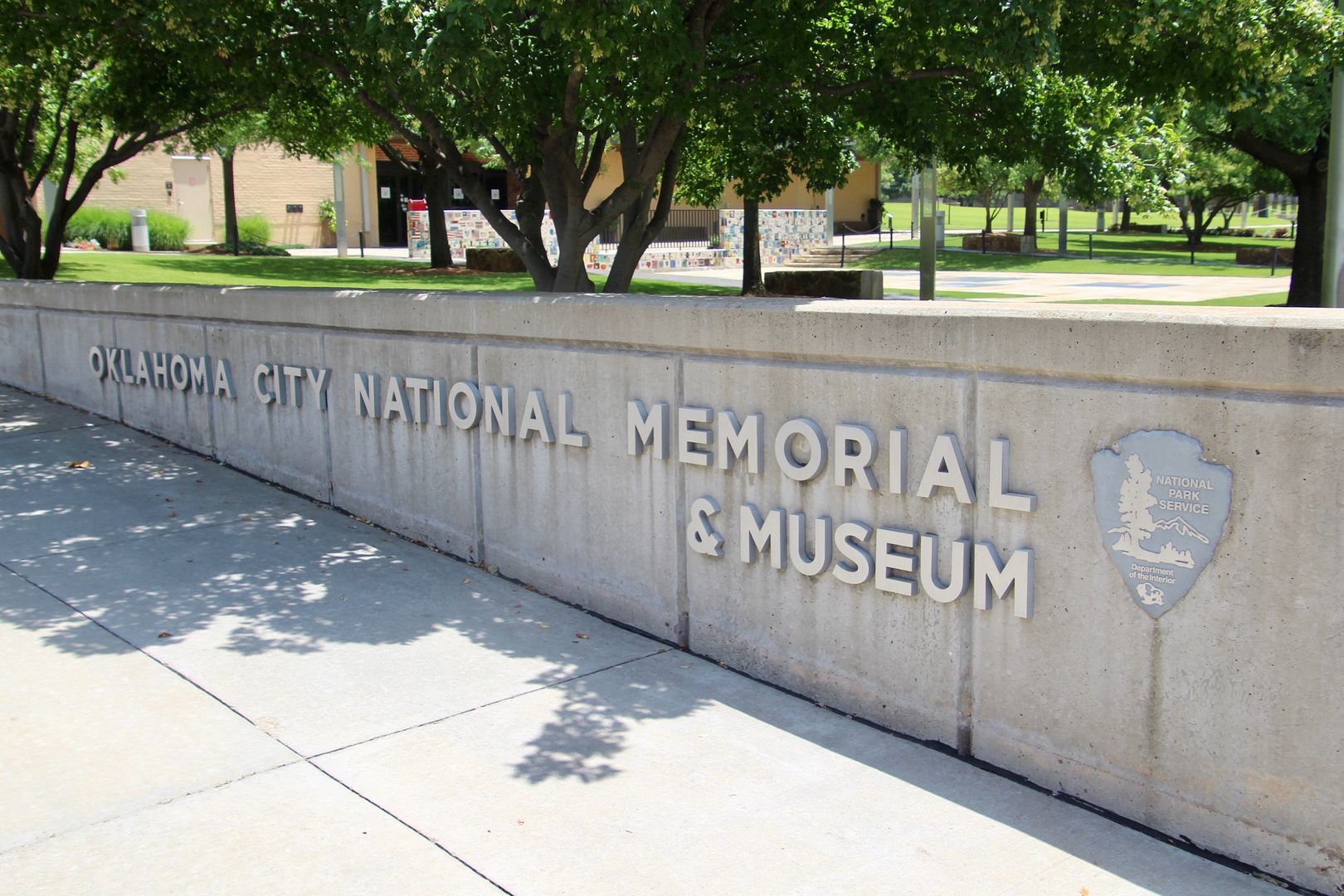

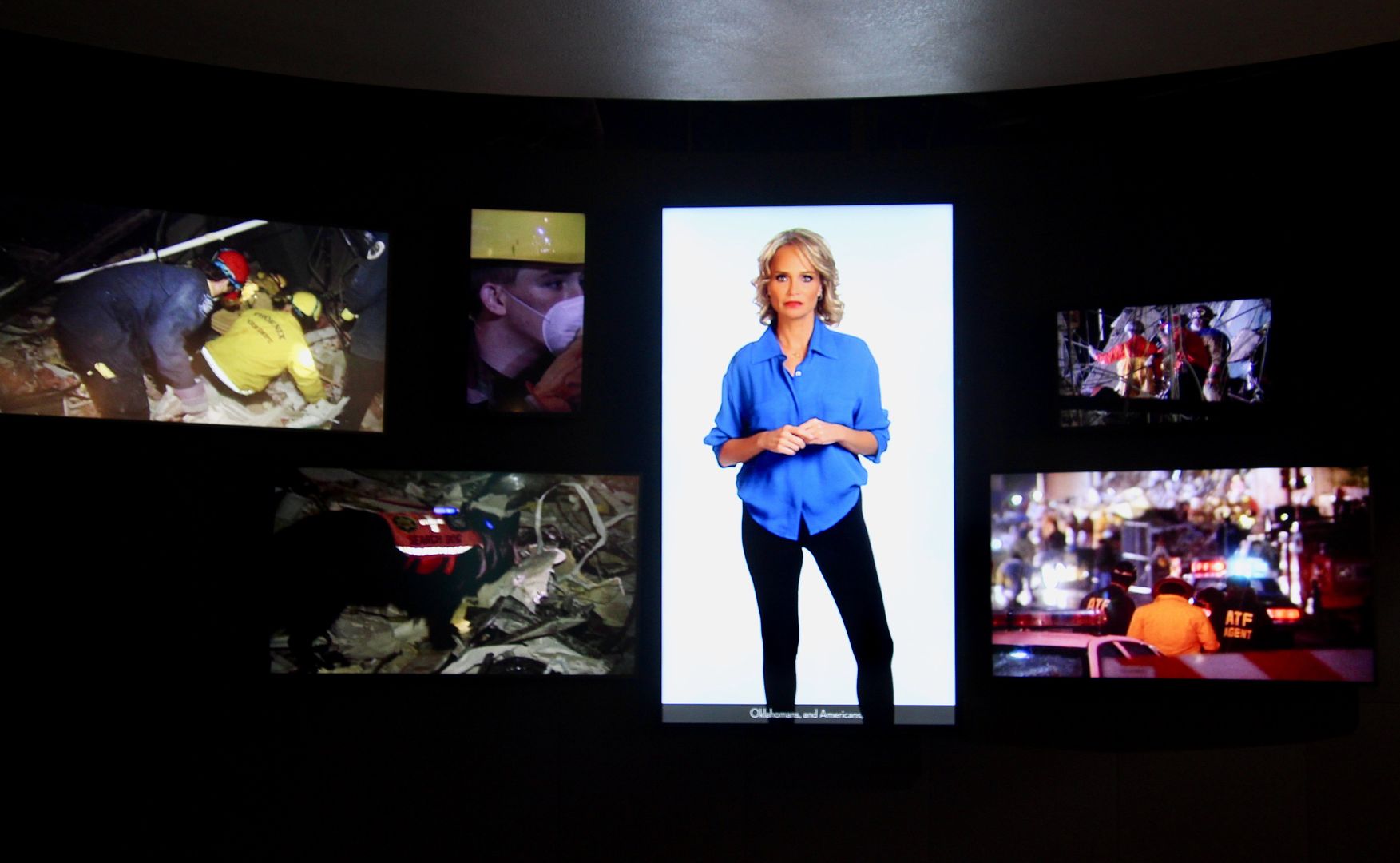
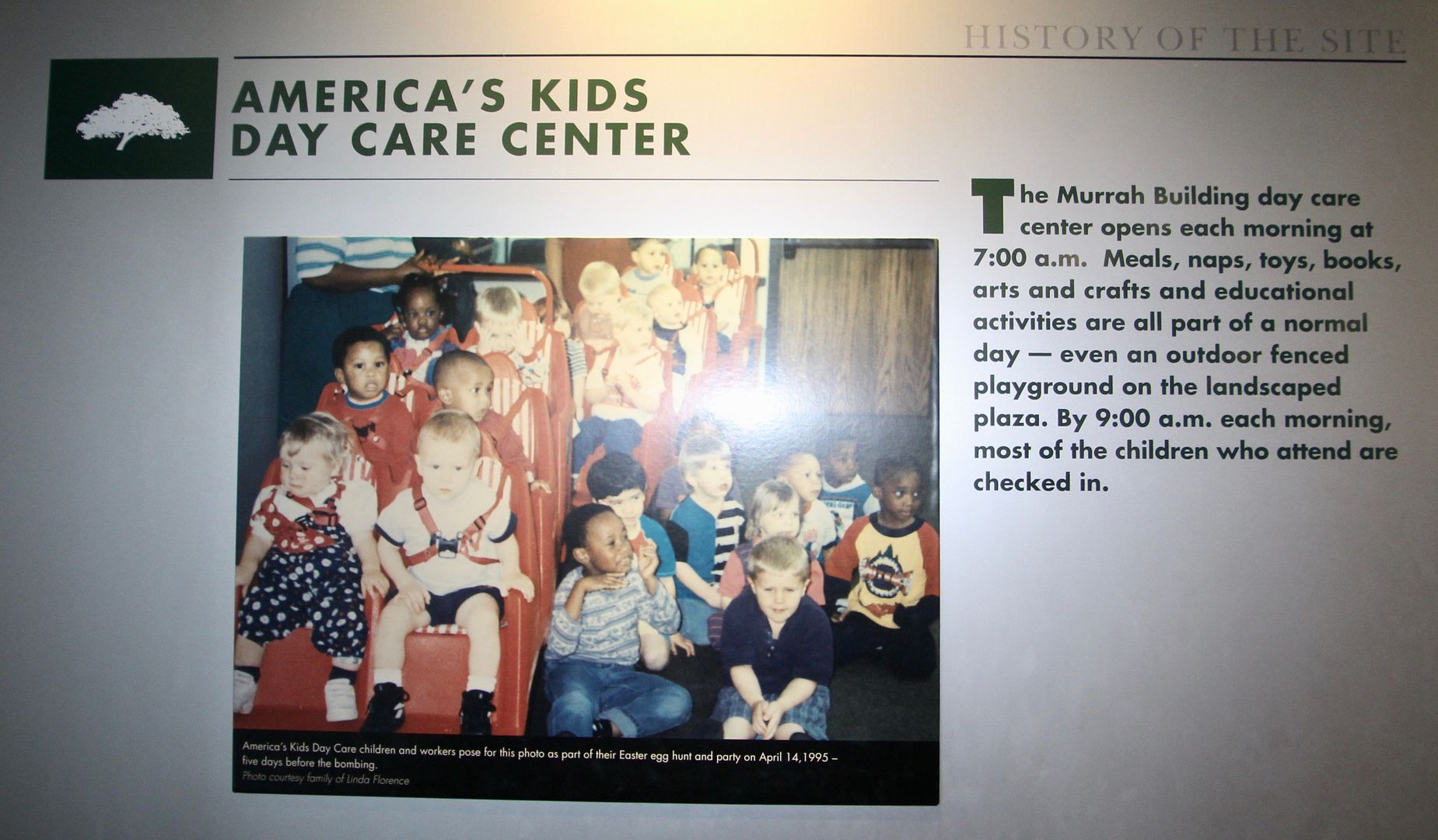
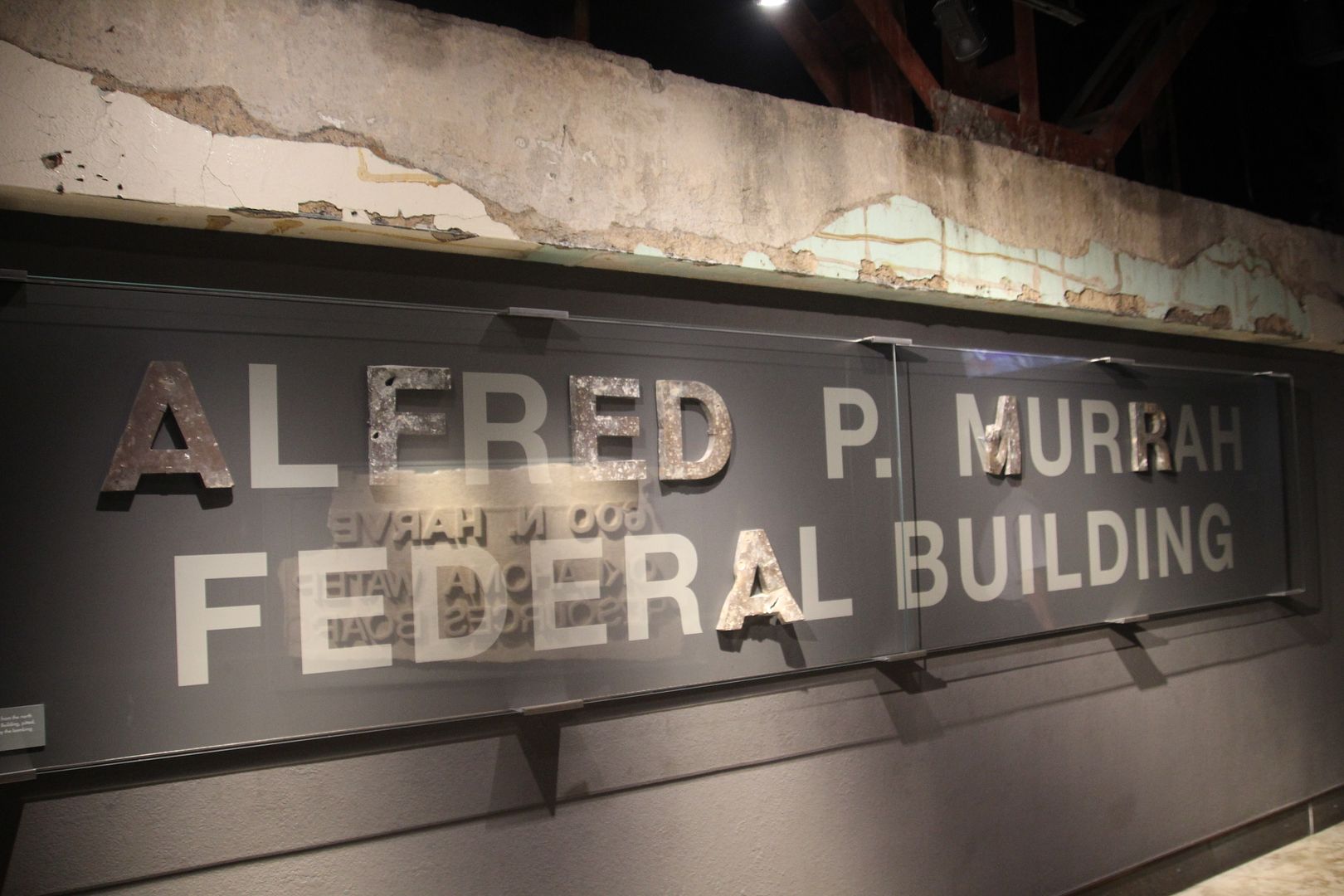
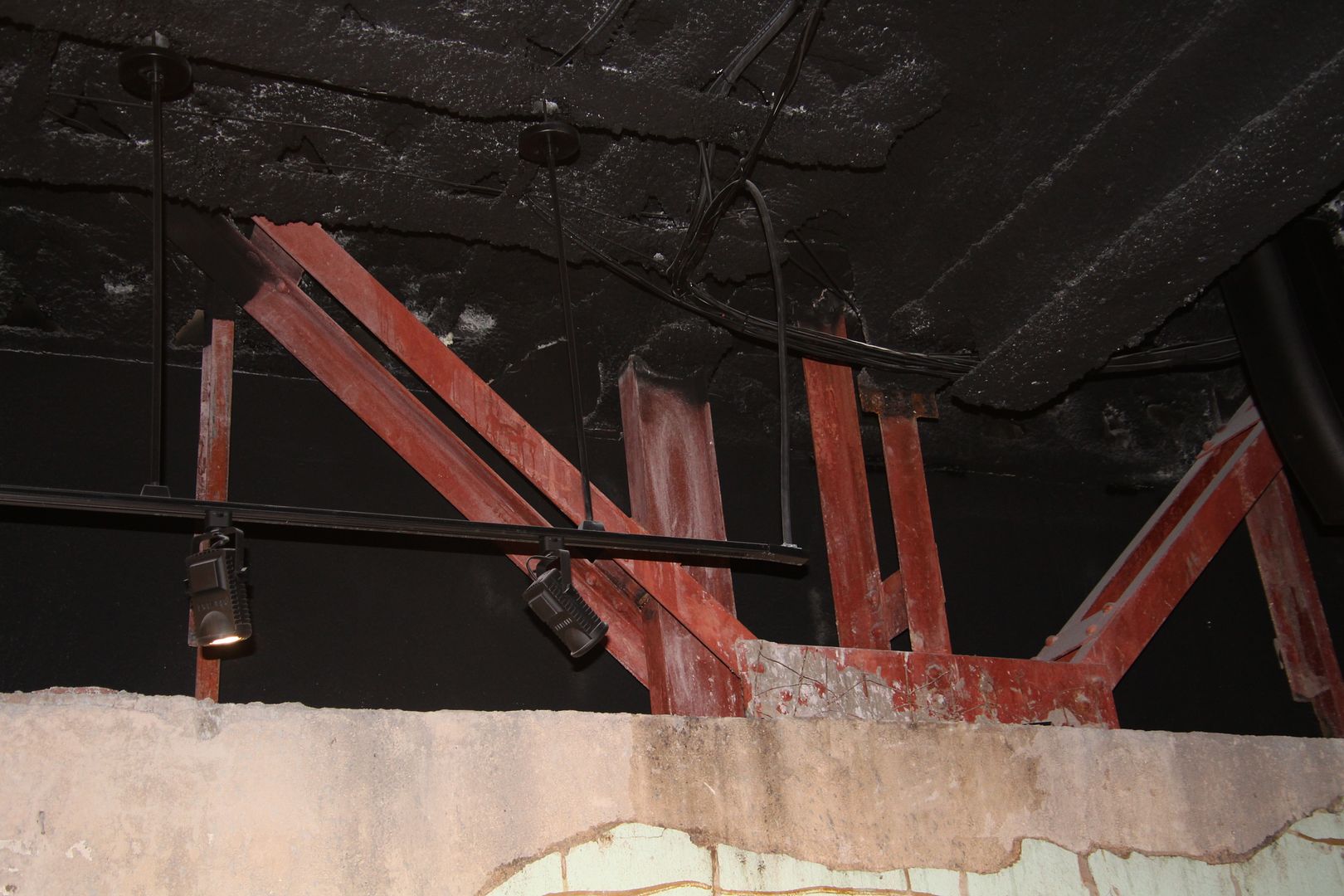


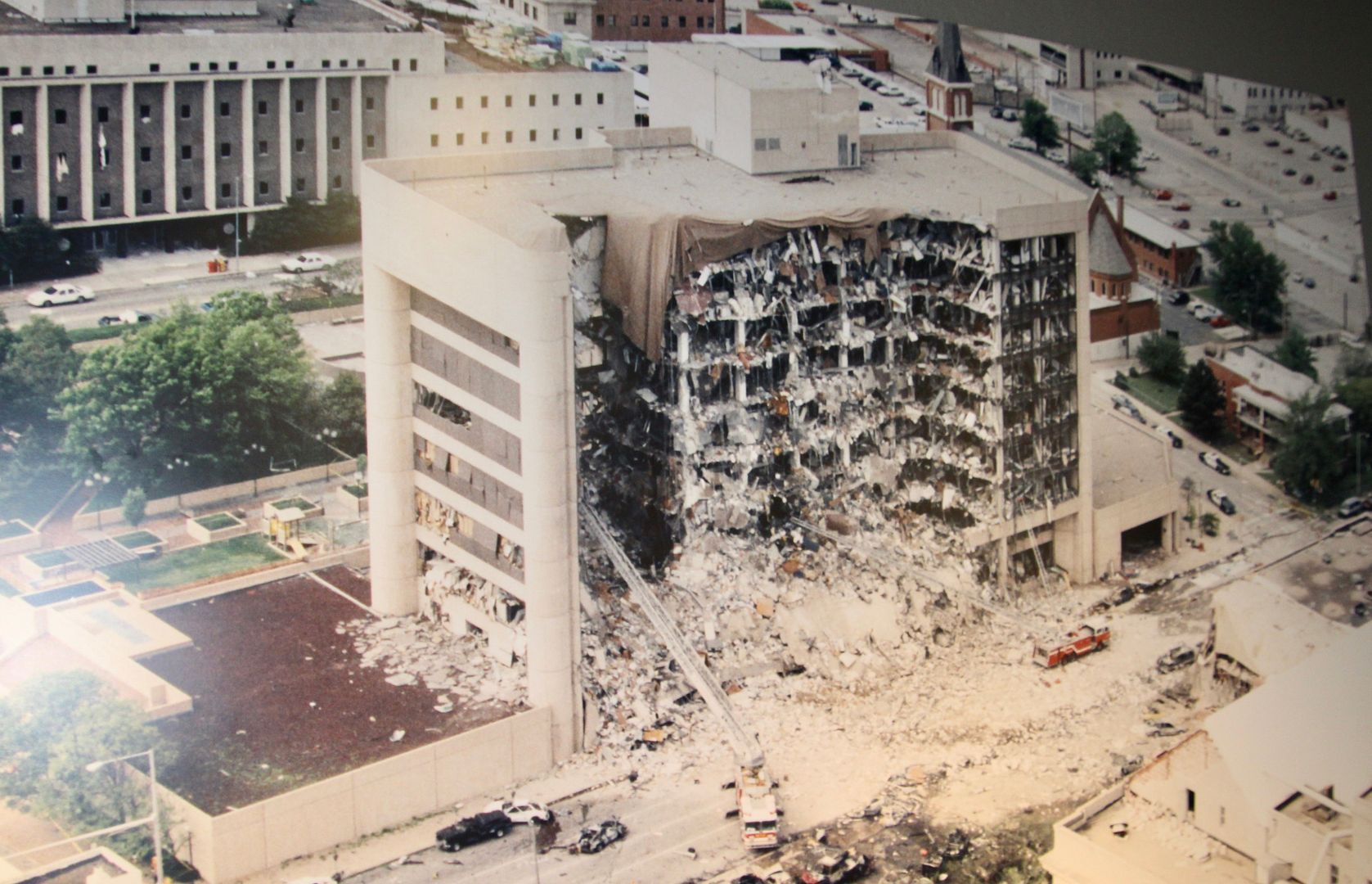
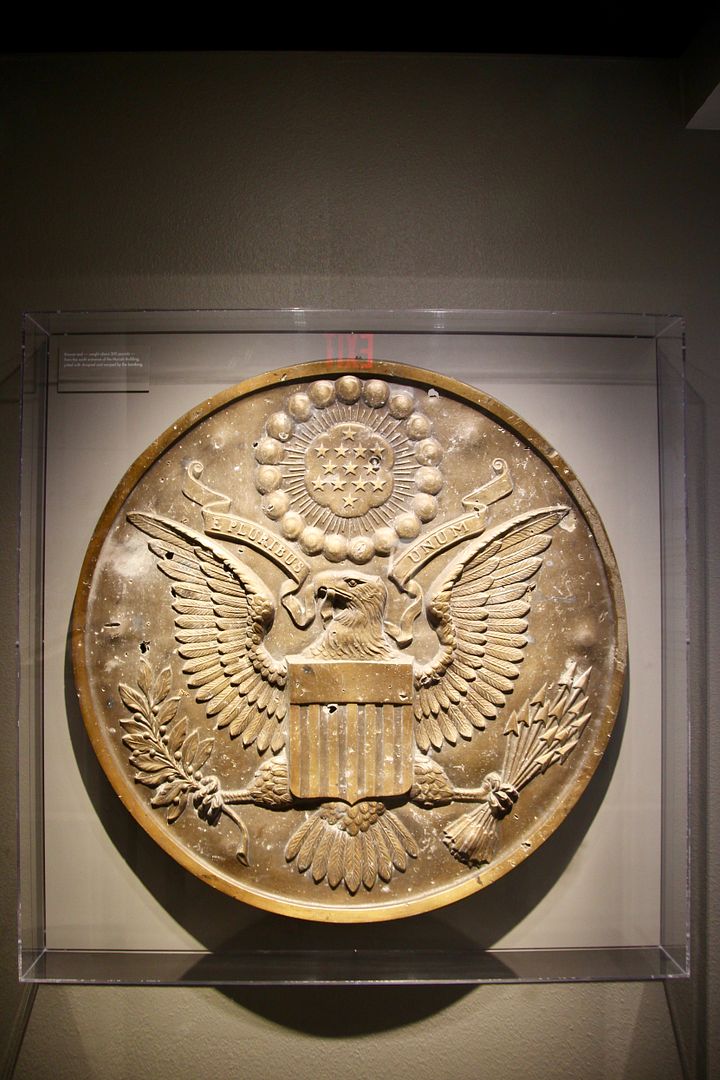
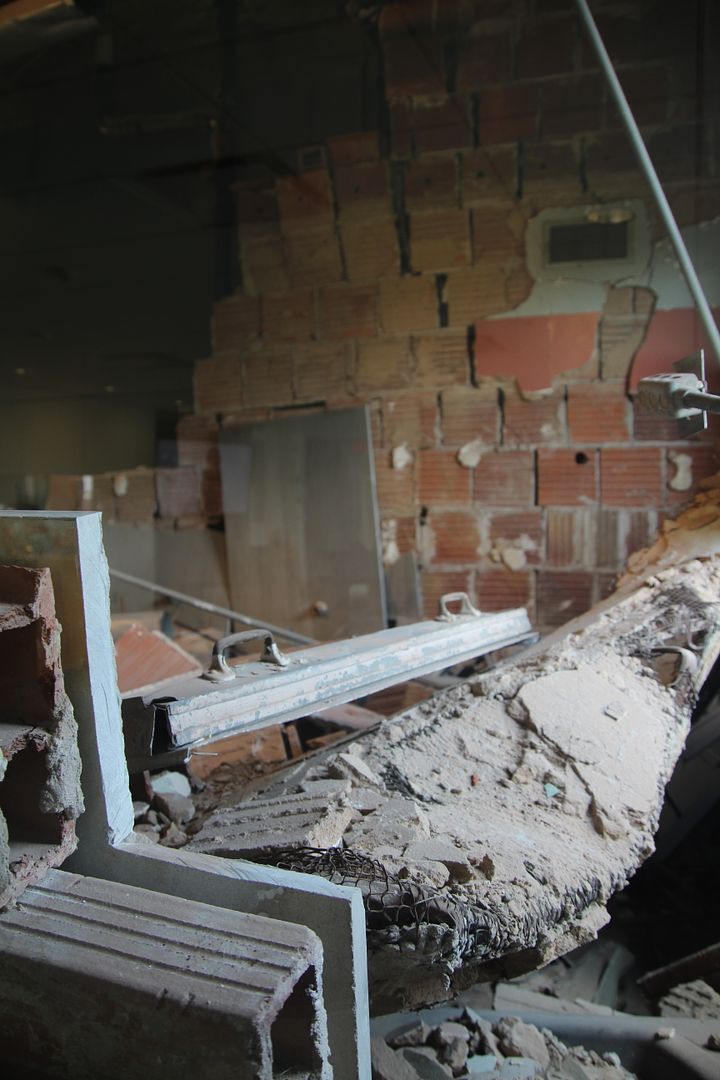


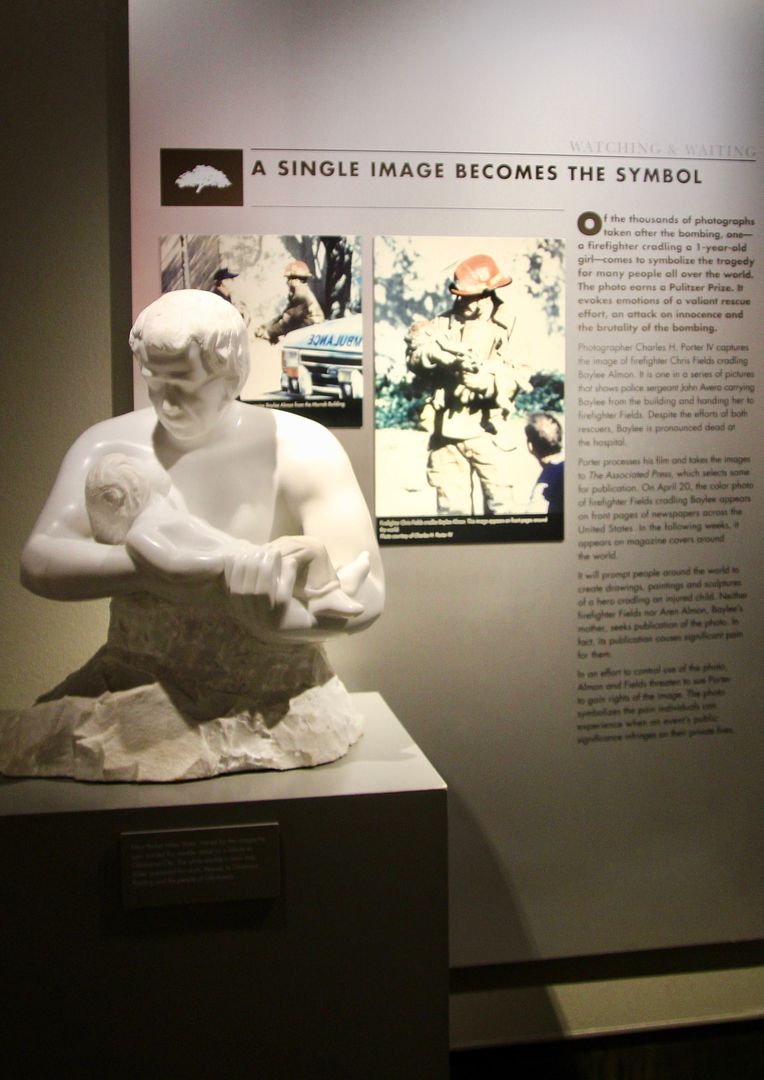
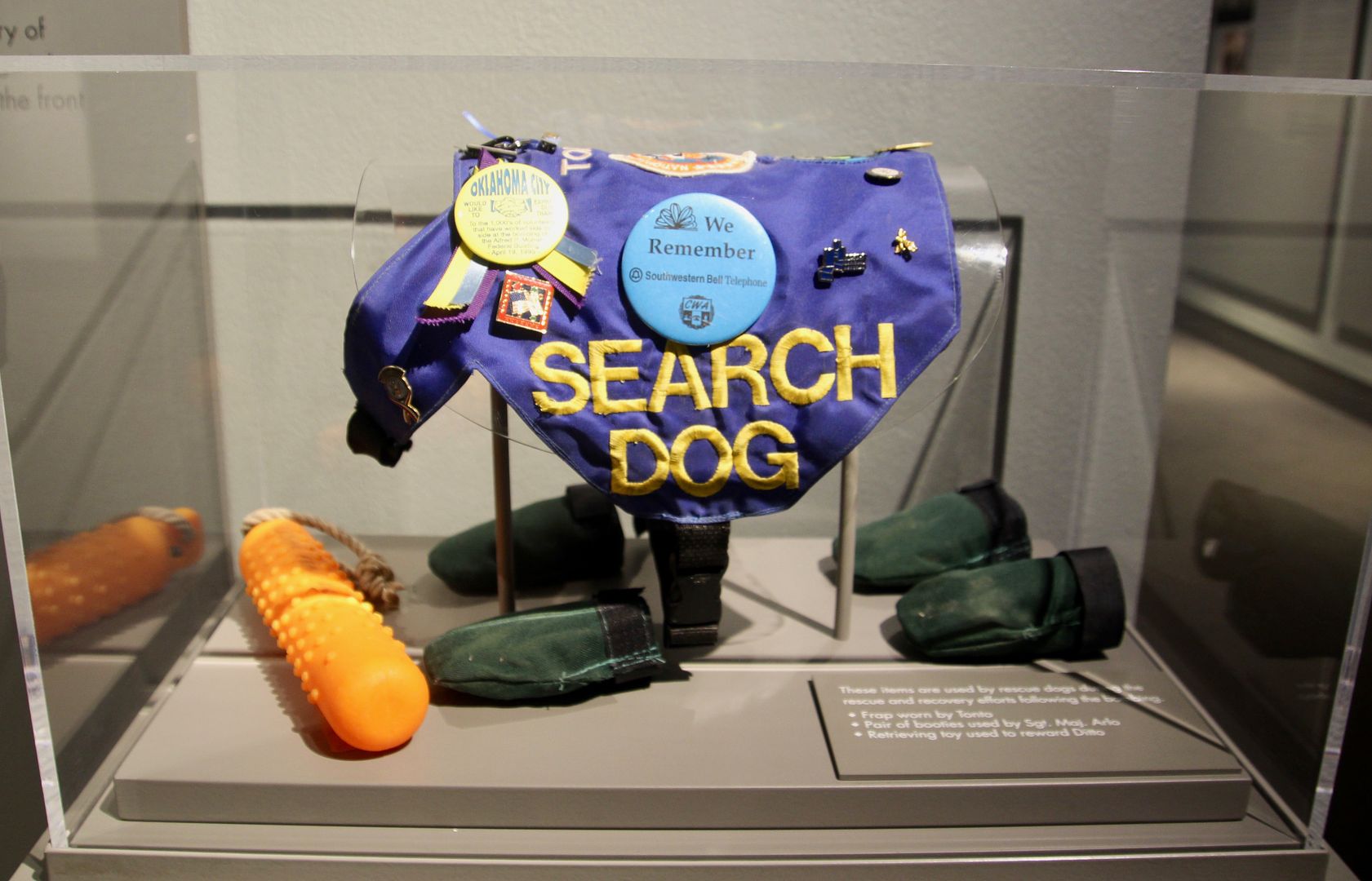


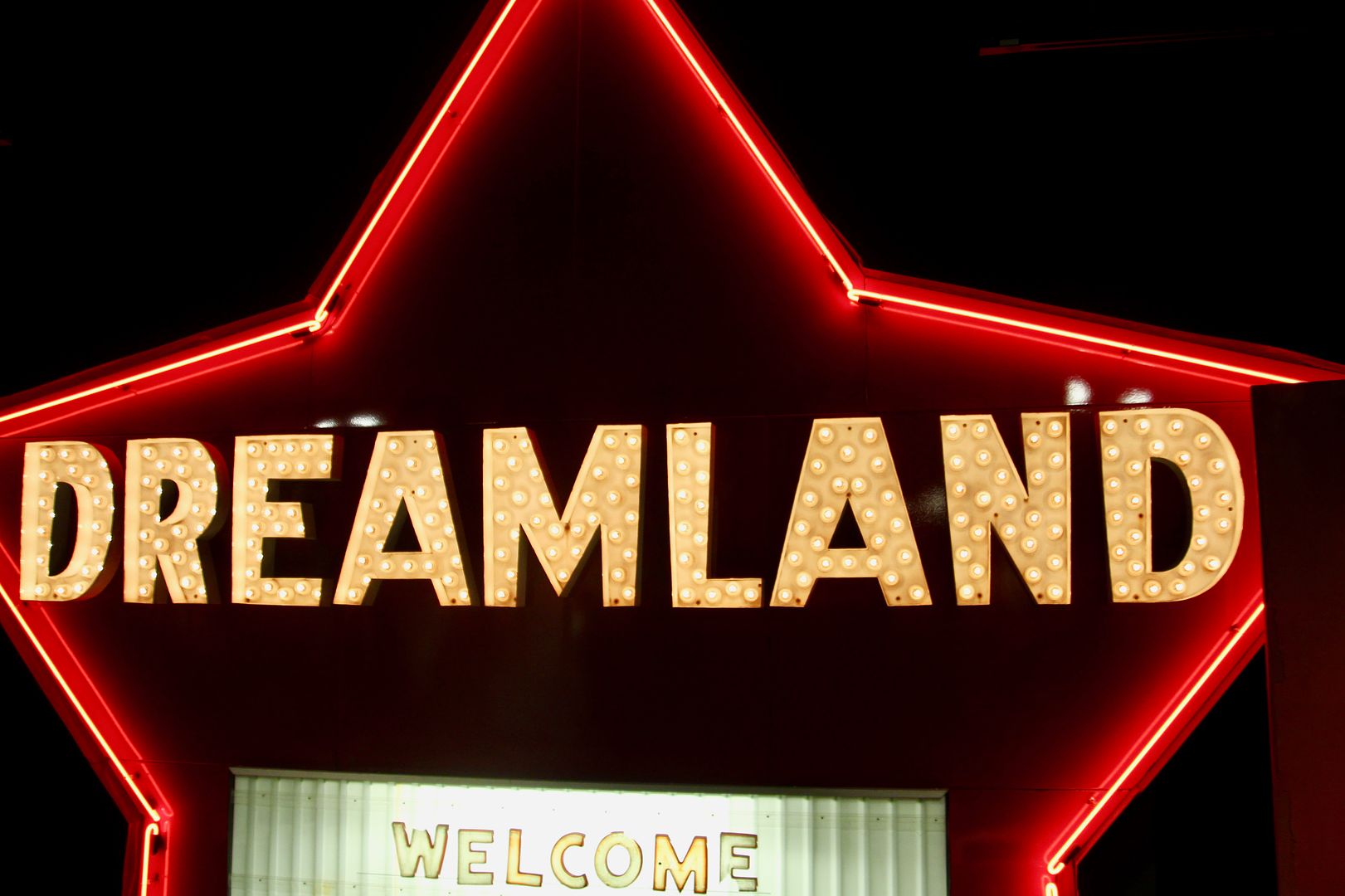
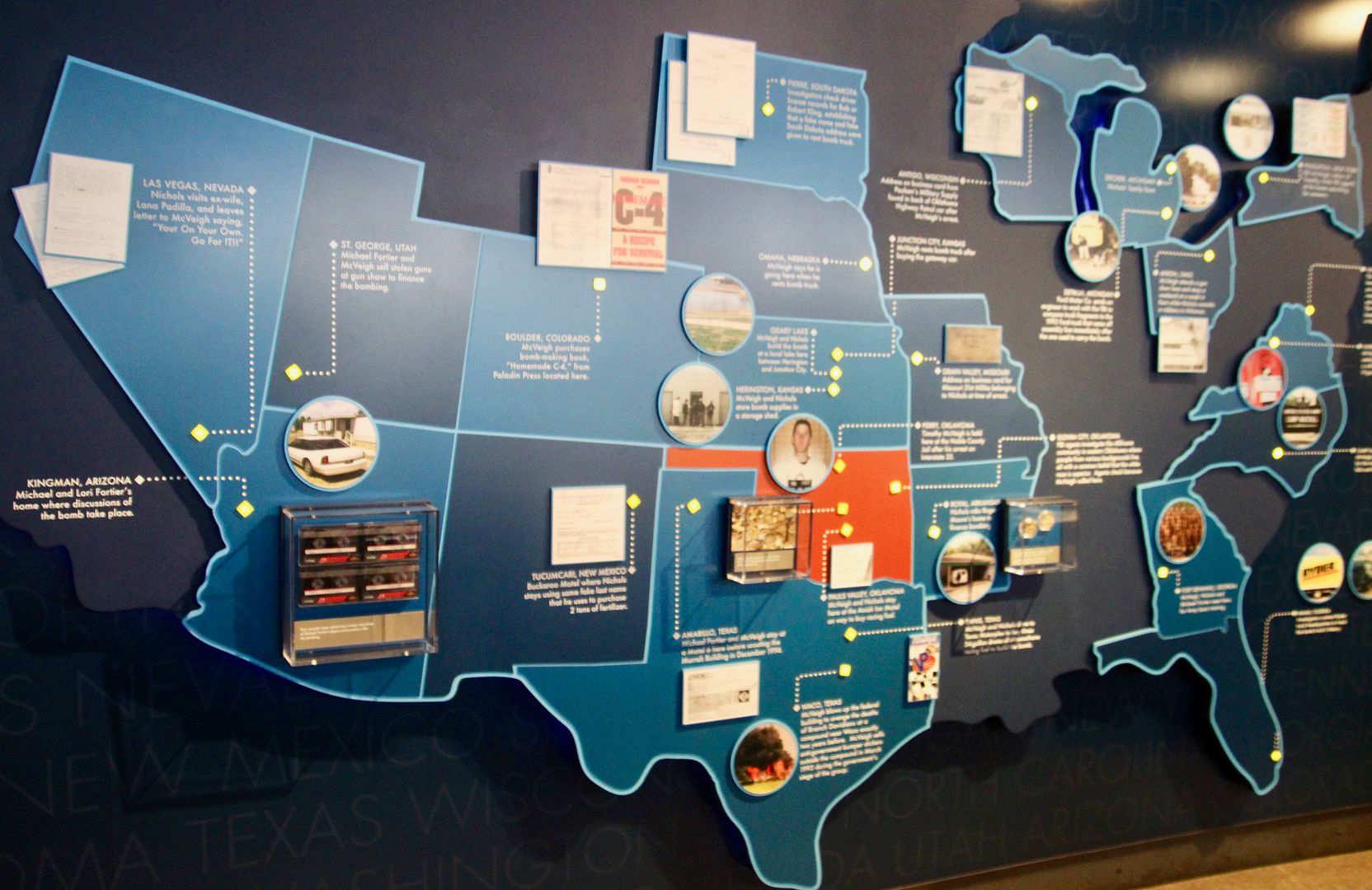

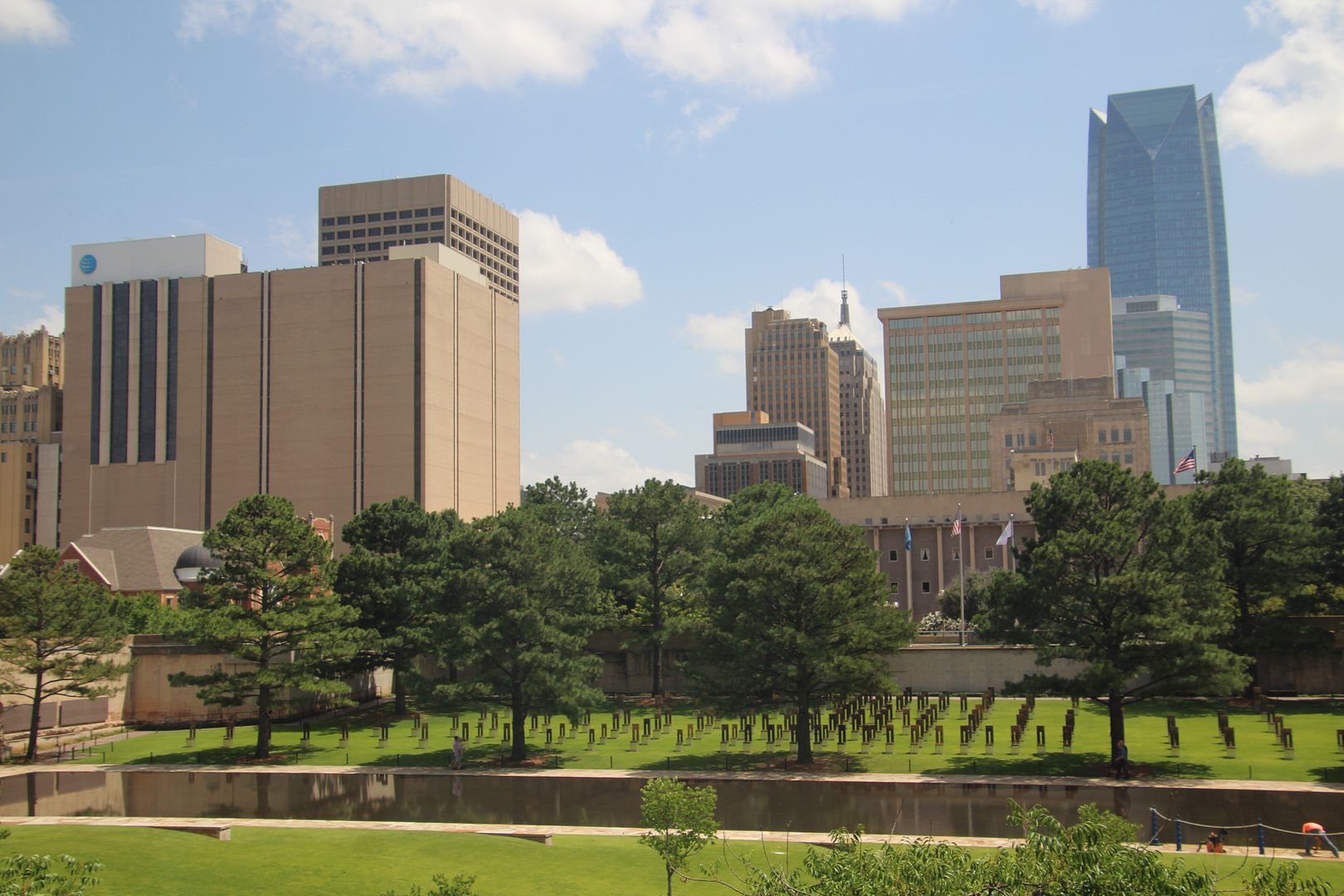
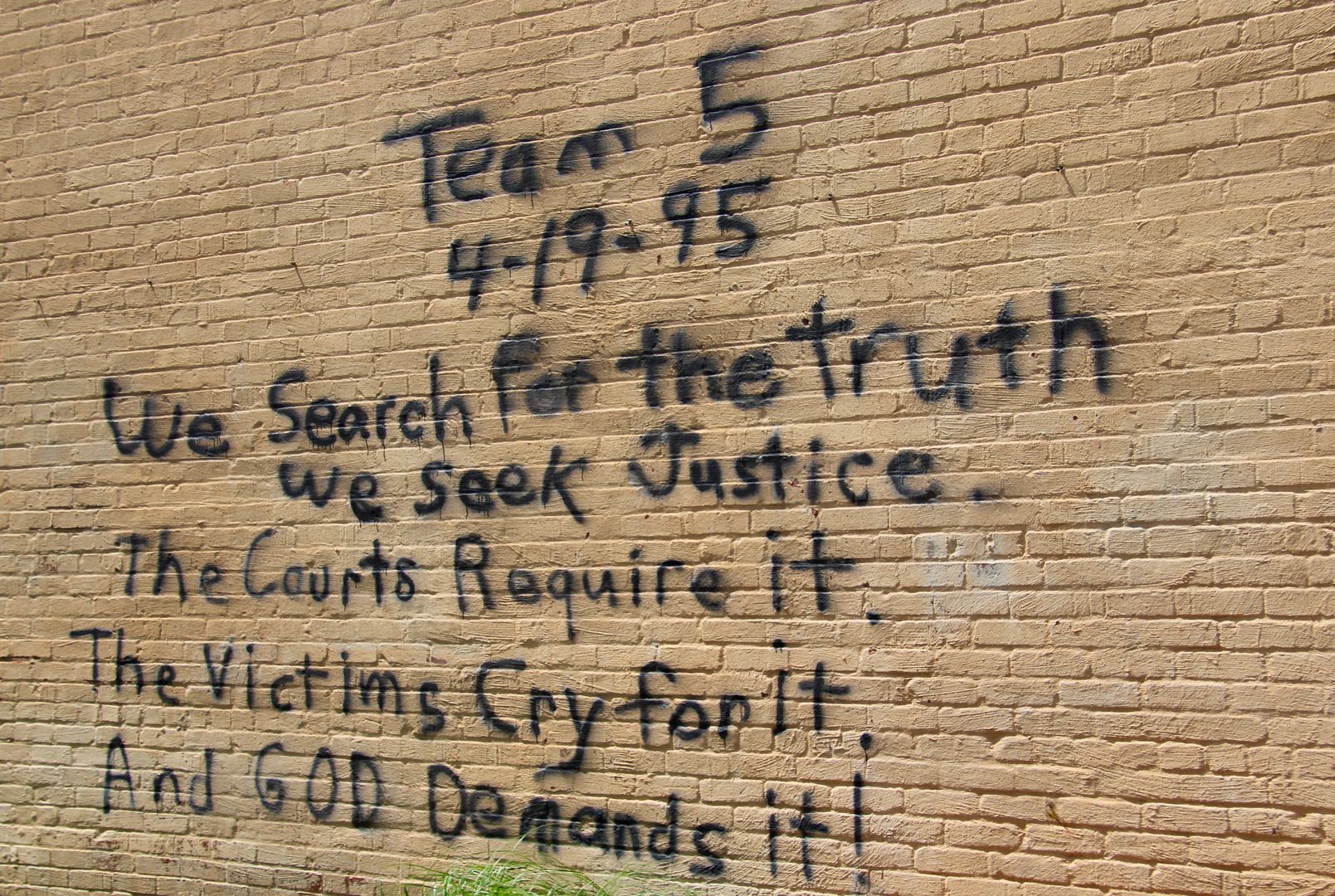
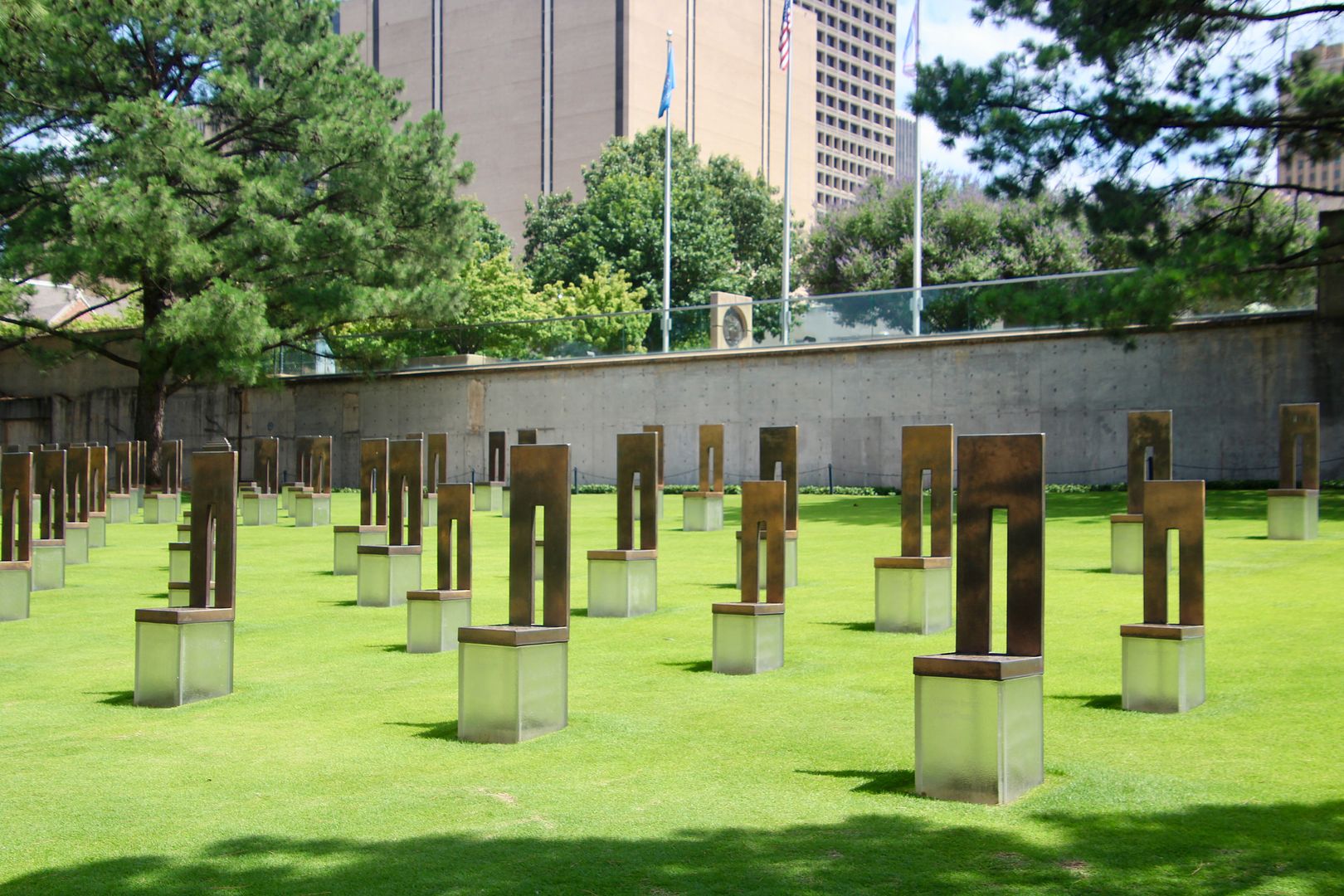
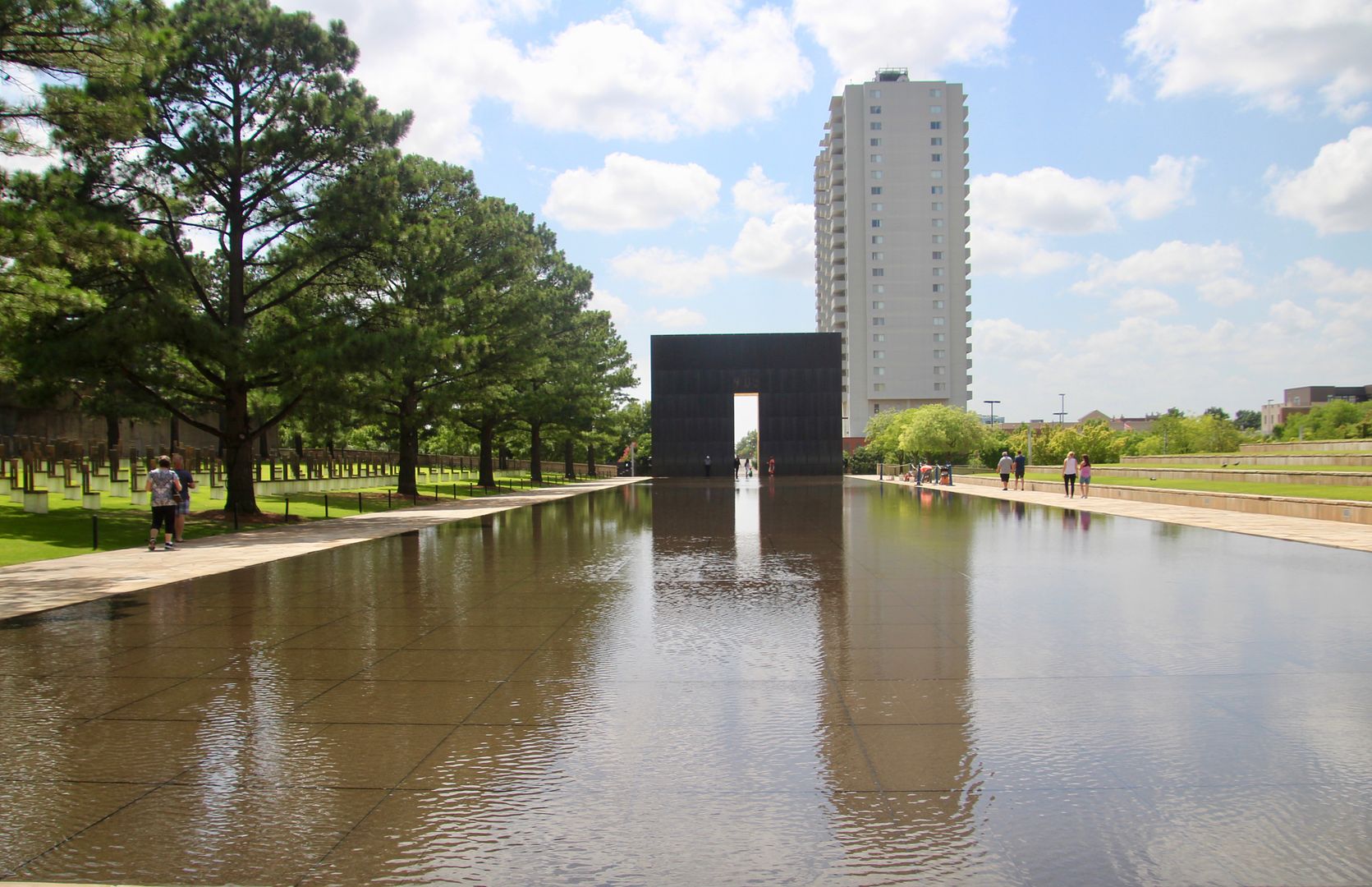

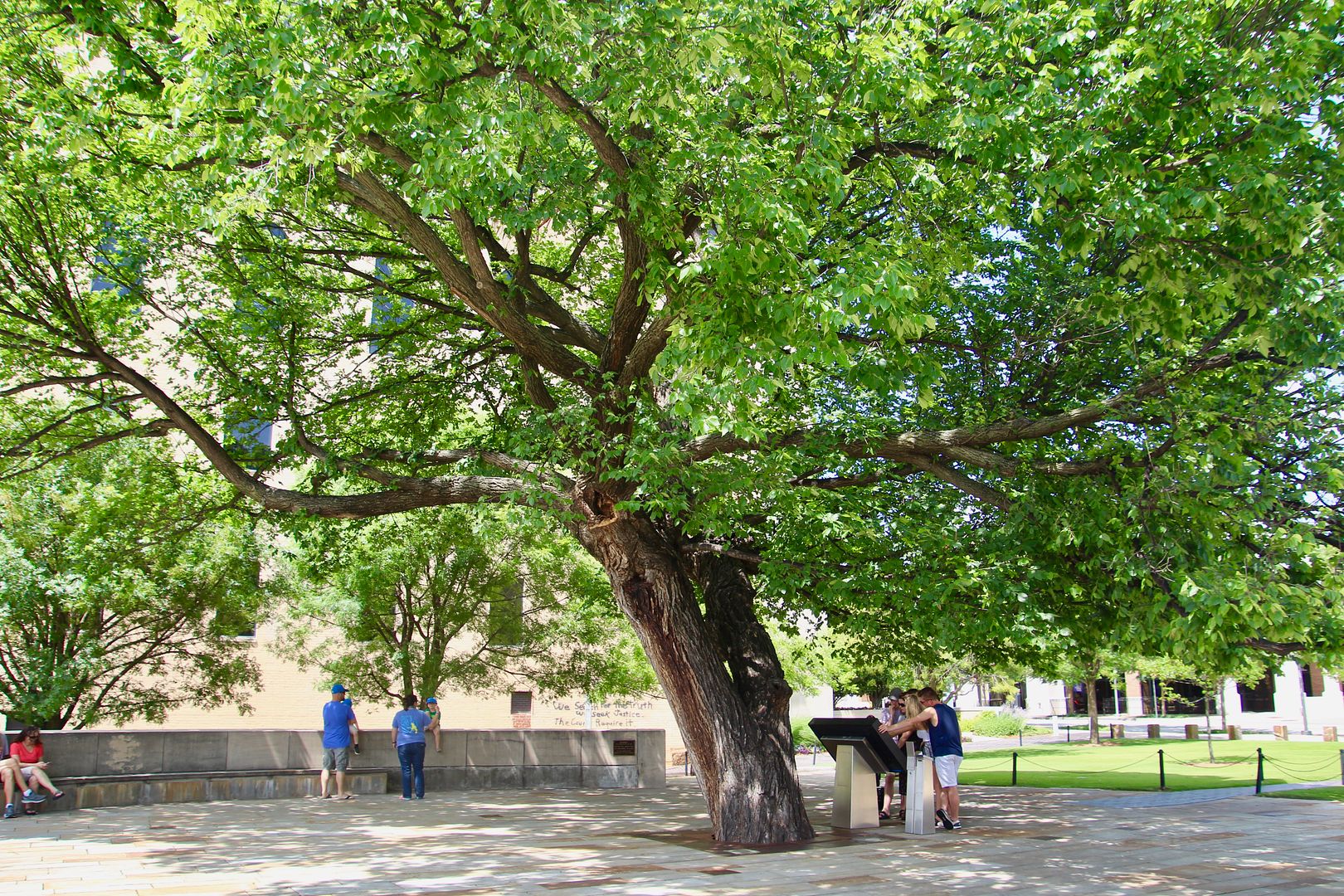
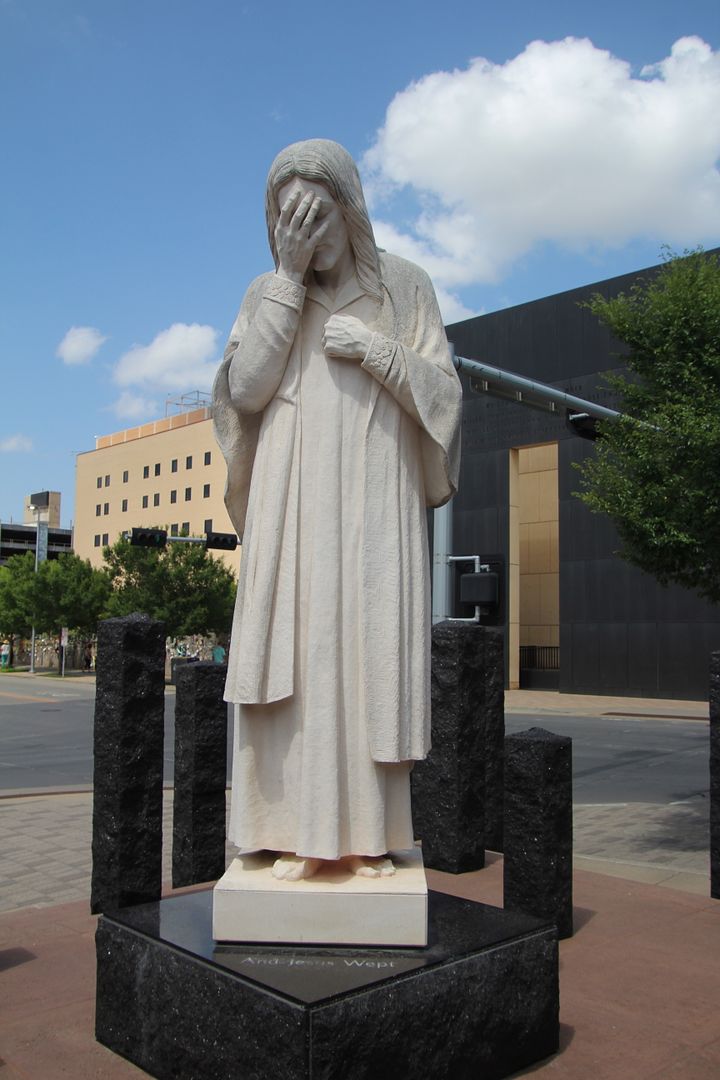
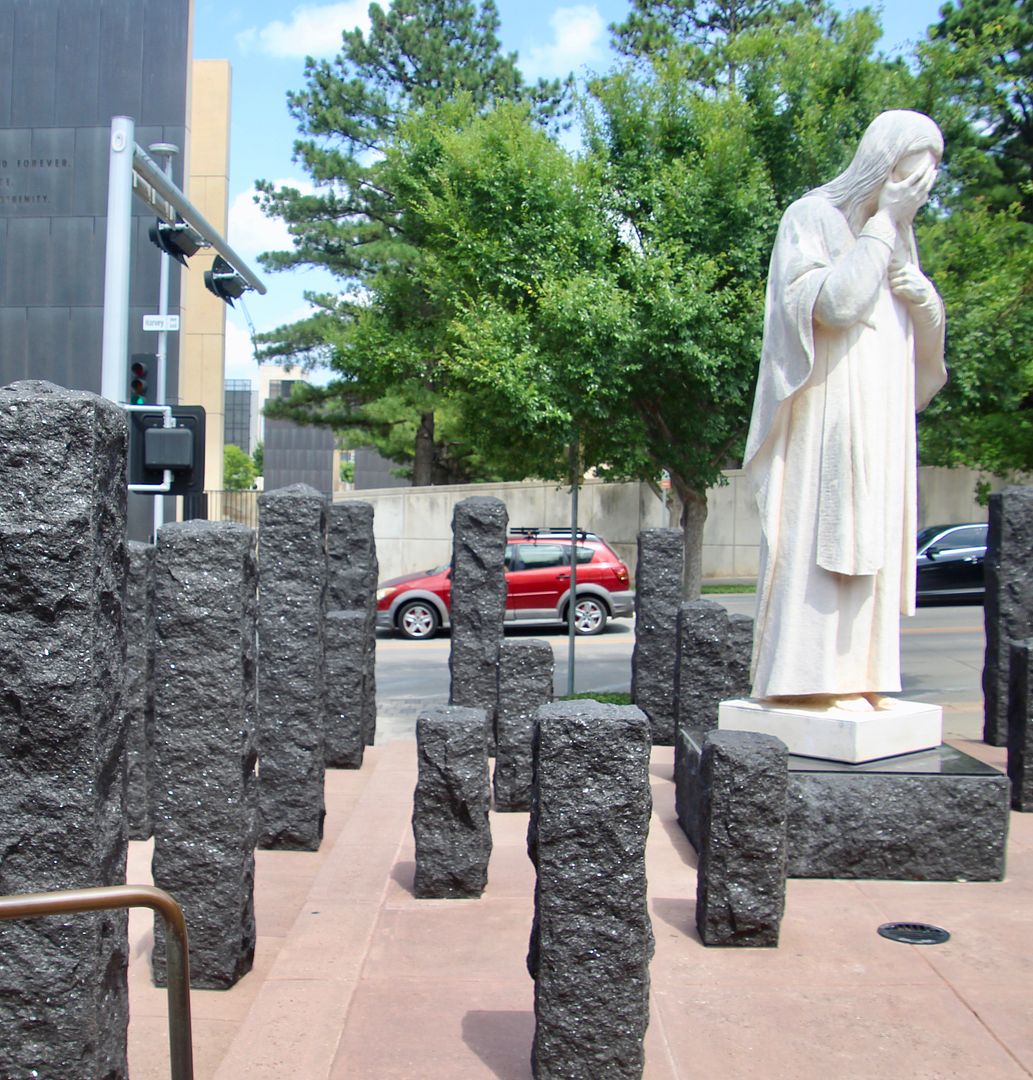
No comments:
Post a Comment